Two of my defining projects as a hardware consultant have been the Museum of Fine Arts in Boston, and Crystal Bridges Museum of American Art in Bentonville, Arkansas. One of our other specwriters, Greg Thomson, currently has two museum projects in progress – the Isabella Stewart Gardner Museum, and the Fogg Art Museum at Harvard.
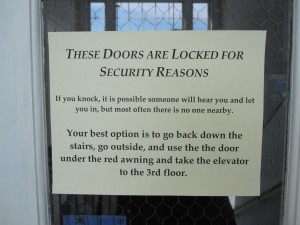 Museums are not easy to specify hardware for because of the aesthetic preferences, security concerns, and code requirements. There are probably lots of ways that museums are difficult, but in case you haven’t noticed, I have a pretty tight focus. Because museum projects tend to be somewhat high-maintenance, I’ll be handling most of them for our office in the future. I guess I’ve had the most experience in the kid-glove treatment of architects with unusual requests.
Museums are not easy to specify hardware for because of the aesthetic preferences, security concerns, and code requirements. There are probably lots of ways that museums are difficult, but in case you haven’t noticed, I have a pretty tight focus. Because museum projects tend to be somewhat high-maintenance, I’ll be handling most of them for our office in the future. I guess I’ve had the most experience in the kid-glove treatment of architects with unusual requests.
(See how tactfully I handled that? 🙂 )
There’s a local museum that’s currently in the fundraising stage of a large renovation, and I’ve been there twice in the last two weeks for community events. The current state of this museum leads me to believe that working on this renovation will be a whole new museum experience.
The building is about 100 years old and was at one time a public school. In recent years they’ve done some creative repairs that would make an architect’s head explode. I’ll give them kudos for trying, but hopefully I’ll get the chance to help them out eventually. Until then, here are some of the existing conditions:
You need to login or register to bookmark/favorite this content.


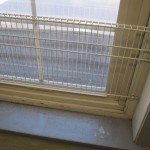

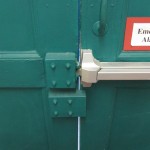
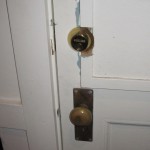

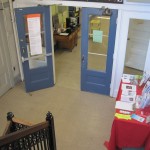


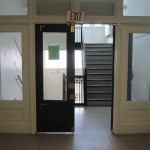
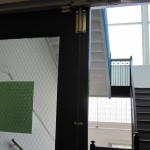
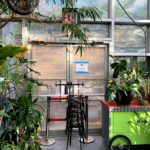




Once they latched on to a good idea (rim strike and stop on pair), it looks like they started to mass produce them.
Maybe the pivot thing is a pivot. The top edge of the door has a reinforced radius edge and may have been hung on pivots.
hello lori, (second time attempting to post this…..)
pretty cool about the museums, I have always loved visiting such places and seeing things, there’s a museum in CT that might spark your interest, the lock museum of America, in Terryville CT.
about the pictures, the one with the pivot thing, yes there once was a double acting door there that probably used a spring hing in bottom edge of door (if there is no brass plate in the floor were a floor mount closer was.
unique how old places still have their old hardware (LCN potbelly closers) if taken care of th right way those things will last a really long time and hopefully when renovation is over they will keep them for another 50+ years.
I too have a potbelly closer (not LCN, mine’s same brand of the ones you spotted in colonial williamsburg, the red doors, my first post on our site last year) those things can sure take abuse and still work like nothing has been done to them, mine, has been thrown, tossed around,(while my dad had a bad attitude fit) fell off tables, and still works good if I cranked up the spring on the gear under the arm, (I choose not to, I leave mine free swinging it’s arm, old closer springs are rare even though there are places out there that fix old closers such as NEDC in west springfeild MA.)
im an expert in these closers, if that museum has any problems or questions with their’s and don’t want to have to pay for help, I’ll b gladly able to tell them how to fix it.
I hope all goes well with the renovation and things are preserved old hardware and closers are what gives a place like a museum its CHARACTER. PLEASE DON’T REMOVE THE POTBELLY CLOSERS FOR SOME CHEAP OFF-BRAND!!
-Jess
The door originally was center hung double acting. When that failed they first wrapped the top edge. When that failed they then mounted the door on hinges. Notice the hinge is not mortised into the door or frame.